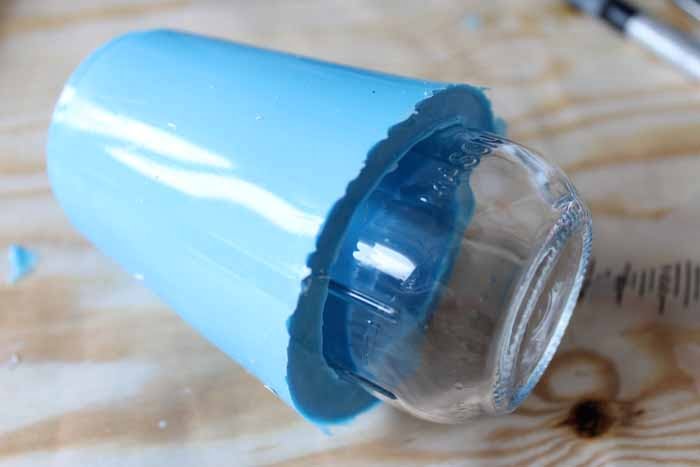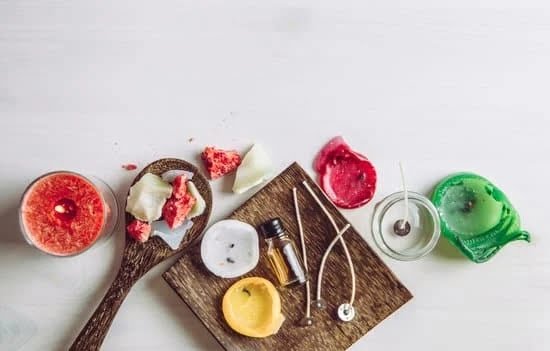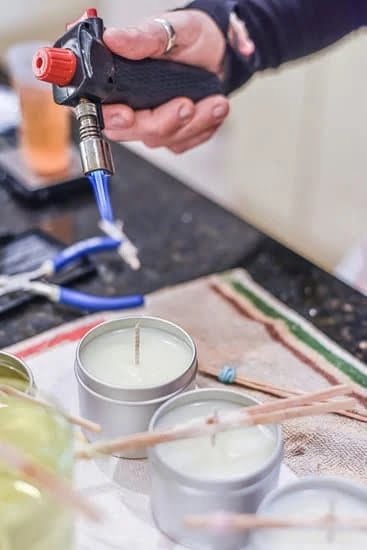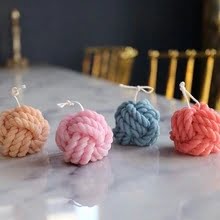Scented candles have long been cherished for their ability to create a soothing and relaxing ambience. The enticing fragrances can instantly transform any space, making it feel cozy and calming. While store-bought scented candles are popular, there is something truly special about creating your own at home. In this article, we will delve into the art and pleasure of scented candles making, exploring the various benefits, techniques, and creative possibilities.
Making your own scented candles can be a fulfilling and rewarding experience. Not only do you have full control over the fragrance and design, but it also allows you to unleash your creativity. By opting for DIY scented candles, you can customize each one to suit your preferences and personal style. Whether you desire a floral aroma or a warm earthy scent, homemade scented candles grant you the freedom to craft a unique sensory experience that aligns with your taste.
Moreover, creating your own scented candles offers several benefits over store-bought options. Firstly, DIY allows you to use natural and high-quality ingredients that might not be found in commercially produced varieties. This ensures that you are not exposed to harmful chemicals or artificial additives often found in mass-produced candles. Secondly, making your own scented candles can be cost-effective in the long run as you can purchase materials in bulk and reuse containers.
Join us on a journey as we explore everything from choosing candle wax types to selecting the perfect fragrance oils. Discover how to navigate the intricacies of wick selection and preparation while learning troubleshooting tips for common candle-making issues along the way. With step-by-step instructions and creative ideas for adding your personal touch through colors and patterns, we’ll guide you through every aspect of creating stunning homemade scented candles.
Embrace the magic of DIY scented candles making at home-where artistry meets relaxation-and enjoy the soothing ambience of your very own creations.
Benefits of Making Your Own Scented Candles
Making your own scented candles at home can bring numerous benefits and reasons why DIY is the way to go. Not only does it allow you to unleash your creativity and personalize your scent combinations, but it also offers several practical advantages.
Cost-effective: One of the main benefits of making your own scented candles is that it can be significantly more cost-effective compared to purchasing them from stores. When buying pre-made candles, you are not only paying for the product itself but also for the brand name and packaging. By making your own candles, you have control over the materials used, allowing you to save money in the long run.
Customizable Scents: Another advantage of DIY scented candle making is the ability to create customized scents that cater specifically to your preferences. With a wide variety of essential oils and fragrance options available, you can experiment with different combinations and strengths until you find the perfect aroma. Whether you prefer floral, fruity, or woody fragrances, making your own candles provides endless possibilities for creating unique scents.
Avoiding Harmful Ingredients: Making your own scented candles also gives you the opportunity to know exactly what ingredients are being used. Many commercially produced candles contain synthetic fragrances and harmful chemicals that may emit toxic fumes when burned. By using natural ingredients such as soy wax and pure essential oils, you can ensure a safer and healthier environment in your home.
Choosing the Perfect Candle Wax
When it comes to making scented candles at home, choosing the right candle wax is essential. The type of wax you use can greatly impact the quality and performance of your candles. There are several different types of candle waxes available, each with its own unique properties and benefits.
1. Paraffin Wax: Paraffin wax is one of the most commonly used candle waxes. It is derived from petroleum and is known for its excellent scent throw and ability to hold color well. Paraffin wax is also relatively inexpensive, making it a popular choice for beginners.
2. Soy Wax: Soy wax is a natural, renewable resource that has gained popularity in recent years. It burns cleaner and slower than paraffin wax, making it a more environmentally friendly option. Soy wax also has a lower melting point, which means it takes longer to cool down and provides a longer burning time.
3. Beeswax: Beeswax is another natural option that produces clean-burning candles with a subtle honey-like aroma. It has a higher melting point than soy or paraffin wax, resulting in slower burning candles. Beeswax candles also emit negative ions when burned, which can help purify the air.
4. Palm Wax: Palm wax is made from palm oil and produces beautiful crystalline patterns when cooled properly. It has a high melting point and excellent scent throw, making it ideal for decorative candles. However, it’s important to choose sustainably sourced palm wax to ensure environmental responsibility.
5. Gel Wax: Gel wax is clear and translucent, allowing for unique decorative possibilities such as embedding objects or creating layered designs within the candle. It burns longer than other waxes but may require additional heat-resistant containers due to its higher melting point.
Regardless of the type of candle wax you choose, it’s important to consider factors such as fragrance compatibility, burn time, and your own personal preferences when making your decision. Experimenting with different types of wax can be a fun and creative process that allows you to customize your candles to suit your own unique style and needs.
Essential Oils and Fragrance Options
When it comes to making scented candles at home, one of the most important aspects to consider is the choice of fragrances. Essential oils play a crucial role in determining not only the scent of your candle but also the potential therapeutic benefits it can provide through aromatherapy. By selecting the right essential oils, you have the power to create a calming and soothing atmosphere in your space.
There is a wide range of essential oils available, each with its own unique scent profile and potential health benefits. Some popular options for scented candles include lavender, eucalyptus, citrus (such as lemon or orange), vanilla, and sandalwood. Lavender is known for its relaxing properties and can help promote better sleep, while eucalyptus has a refreshing and invigorating aroma that can clear the mind and increase focus.
To ensure that you are using high-quality essential oils in your scented candles, it is important to purchase them from reputable sources. Look for oils that are 100% pure and organic, as synthetic fragrances may not offer the same therapeutic benefits. It is also recommended to do some research on each oil’s specific properties before incorporating them into your candles.
When adding essential oils to your candle wax, it is essential to follow recommended guidelines for fragrance load. Generally, a safe guideline is to add about 1 ounce of fragrance oil per pound of wax. However, this can vary depending on personal preference and the strength of the fragrance oil you are using. Additionally, consider experimenting with different combinations of essential oils to create unique scent blends that cater to your individual preferences.
The Right Wick Matters
Understanding the Importance of the Wick
The wick is a crucial component of any candle as it plays a significant role in determining how well the candle burns and releases fragrance. Choosing the right wick is essential to ensure that your scented candle performs optimally and provides an enjoyable experience. The wick size, material, and rigidity can all affect the burn time, scent throw, and overall quality of your candle.
Selecting the Right Wick Size
When it comes to selecting the right wick size for your scented candle, it is important to consider factors such as the diameter of your container or mold and the type of wax you are using. As a general rule of thumb, larger candles require thicker wicks to sustain a steady flame, while smaller candles may need thinner wicks to prevent excessive heat.
To determine the appropriate wick size, you can refer to various resources such as online charts provided by reputed candle making suppliers or conduct test burns with different sizes for your specific combination of wax and container. It’s always recommended to start with a small batch or sample candles before producing in larger quantities to ensure that you have chosen the correct wick size for optimal performance.
Preparing Your Wick
Before adding the wick to your scented candle, it is crucial to prepare it properly to ensure even burning and minimize issues such as drowning or tunneling. One important step in preparing your wicks is priming them. Priming involves soaking the wick in melted wax for a few minutes and then allowing it to cool and harden.
Priming helps reduce air bubbles within the fibers of the wick, enhances stability during pouring, and aids in consistent burning throughout the life of the candle. Additionally, primed wicks tend to perform better with various types of wax compared to unprimed ones. Taking this extra step will ensure that your wick remains centered and provides a steady, efficient burn, resulting in a beautiful and fragrant homemade scented candle.
Step-by-Step Candle Making Process
Melting the Wax
The first step in making scented candles at home is melting the wax. There are different types of candle wax available, such as soy wax, beeswax, and paraffin wax. Each type has its own melting point and properties, so it’s important to follow the manufacturer’s instructions.
To melt the wax, you can use a double boiler or a microwave. If using a double boiler, fill the bottom pot with water and place it on low heat. Place the wax in the top pot and allow it to melt slowly. If using a microwave, place the wax in a microwave-safe container and heat it in short intervals, stirring in between, until completely melted.
Adding Fragrance
Once the wax has melted, it’s time to add fragrance to your scented candles. Essential oils are commonly used for this purpose as they offer natural and long-lasting scents. You can choose from various essential oils depending on your preference and the mood you want to create.
To add fragrance to your candle, carefully pour a few drops of essential oil into the melted wax. The recommended ratio is about 1 ounce of essential oil per pound of wax, but you can adjust it based on your personal preference for scent strength.
Pouring and Setting
After adding fragrance to the melted wax, thoroughly mix it for even distribution of scent. Then, carefully pour the mixture into your chosen candle container or mold. Be sure to leave some space at the top for later steps.
Next, insert a wick into the center of the candle while holding it upright with a wick holder or pencil. Allow the candle to set completely before moving or trimming the wick. The setting time may vary depending on factors such as room temperature and type of wax used.
Following these step-by-step instructions will help you create beautiful scented candles at home. With practice and experimentation, you can develop your own techniques and create unique candle creations that add a touch of warmth and fragrance to any space.
Creative Candle Designs
Adding colors, patterns, and personal touches to your scented candles can elevate their appearance and make them truly unique. With a few simple techniques and materials, you can transform plain candles into works of art that reflect your style and creativity. Here are some ideas to inspire you:
Using Color
- Add a pop of color by incorporating colored wax into your candles. You can purchase pre-colored wax or use liquid candle dyes to achieve the desired shade.
- Create beautiful gradient effects by layering different colored wax in your container candles.
- If you prefer a more subtle look, consider adding mica powder or glitter to your melted wax for a touch of shimmer.
Experimenting with Patterns
- Marbling technique: Dip a skewer or toothpick into melted wax dye and swirl it through the partially set candle wax to create a marbled effect.
- Tape resist method: Apply adhesive tape in patterns or shapes onto the outside of your container before pouring the melted wax. Once the candle has set, carefully remove the tape to reveal the design.
- Layered designs: Pour different layers of differently colored wax into your container, allowing each layer to set before adding the next one. This creates beautiful striped or layered patterns.
Adding Personal Touches
- Incorporate dried flowers, herbs, or fruit peels into your candles for a natural touch. Make sure these additions are small and dry to prevent moisture from affecting the burning process.
- If you’re feeling artistic, try dip-dyeing your taper candles using fabric dye for an ombre effect.
- Consider using decorative molds when making pillar or novelty-shaped candles for special occasions like birthdays or weddings.
Remember to experiment and have fun with your candle designs. The possibilities are endless, so don’t be afraid to get creative and let your imagination run wild. This is a wonderful opportunity to showcase your personal style and create candles that look just as good as they smell.
Troubleshooting Tips
Overview
As with any craft or DIY project, making scented candles at home can sometimes come with its own set of challenges. However, with the right knowledge and troubleshooting techniques, you can easily overcome these issues and create beautiful, fragrant candles. In this section, we will explore some common problems that candle makers may encounter and provide tips on how to avoid or fix them.
Issue 1: Frosting
One common issue that candle makers often face is frosting, which appears as a white, powdery coating on the surface of the candle. While frosting does not affect the performance or scent throw of the candle, it can be undesirable from an aesthetic standpoint. To prevent frosting, it is important to properly cool your candles.
Rapid cooling or exposing the candles to fluctuating temperatures can contribute to frosting. To avoid this issue, allow your candles to cool slowly and evenly at room temperature without any sudden changes in temperature.
If you already have frosted candles, there are a few methods you can try to fix them. One option is using a heat gun or hairdryer on low heat settings to gently warm the surface of the candle until the frosting disappears. Another method involves placing the frosted candle in a plastic bag and applying gentle pressure with your hands. The warmth from your hands may help melt the wax slightly and reduce the frosting effect.
Issue 2: Sinking Wick
Another problem that candle makers may encounter is a sinking wick where it dips into the melted wax instead of standing upright throughout burning. This issue can lead to poor burn quality and uneven melting of wax. To prevent a sinking wick, make sure that you properly secure it in place when pouring melted wax into your container by using wick holders or tape across the top of the container.
If your wick still sinks while burning, there are a couple of steps you can take. The first is to gently pour out some of the melted wax around the wick, creating a small well that will allow the flame to reach the wick easier.
Alternatively, you can use a toothpick or skewer to prop up the sinking wick temporarily until it burns down to meet the wax pool. Remember to always monitor the candle while doing this and ensure that it is done in a safe manner.
By being aware of these common issues and knowing how to troubleshoot them, you can enhance your experience of making scented candles at home and create candles that are both visually appealing and functional. Keep experimenting with different techniques and enjoy the process of learning and perfecting your craft.
Candle Care and Storage
After putting in the effort to make your own scented candles, it’s important to take proper care of them so that they can last as long as possible. By following a few simple steps, you can ensure that your creations continue to provide you with their soothing ambience for an extended period of time.
Firstly, when burning your candles, it’s important to trim the wick before each use. This helps prevent any excess soot from forming and ensures a clean and even burn. Use a pair of scissors or a wick trimmer to trim the wick to about ¼ inch before lighting it. Be sure to remove any debris or burnt pieces from the candle before lighting it again.
Additionally, it’s essential to allow your candle to achieve a full melt pool during each use. A melt pool refers to the liquid wax that forms on the surface of the candle when it is burned. This helps prevent tunneling, where there is unused wax left along the edges of the container.
To achieve a full melt pool, burn your candle for at least an hour for every inch in diameter. This will ensure an even burn and maximize your candle’s fragrance throw.
When extinguishing your candle, avoid blowing out the flame as this can cause smoke and leave behind a strong after-smell. Instead, gently snuff out the flame using a candle snuffer or dip the wick into the melted wax and then straighten it up again before re-lighting. This method helps reduce smoke and preserves the scent of your candle.
Proper storage is also crucial in maintaining the quality of your scented candles. Keep them away from direct sunlight or harsh temperatures as these can cause discoloration or melting of the wax. It’s best to store candles in a cool, dry place where they can remain upright and undisturbed until ready for use.
By following these candle care and storage tips, you can enjoy the full potential of your handmade scented candles. With a little extra care, you can make your creations last longer, allowing you to continue experiencing the relaxing ambiance and delightful fragrances they offer.
Scented Candles for Various Occasions
When it comes to scented candles, the possibilities are endless. Not only can they create a soothing ambience in your own home, but they also make for wonderful gifts and can be used to decorate various occasions. Whether you’re looking for a unique present or want to add a touch of elegance to a special event, scented candles are the perfect choice.
One popular occasion to use scented candles is weddings. Candles can bring a romantic and intimate atmosphere to any wedding ceremony or reception. In addition, you can customize the scent of the candles to match the theme or color scheme of the wedding.
For example, if it’s an outdoor summer wedding, you may choose to use candles with citrus or floral scents. On the other hand, if it’s a winter wedding, warm and cozy fragrances like cinnamon or vanilla would be more appropriate.
Another occasion where scented candles shine is during holiday celebrations such as Christmas or Halloween. Scented candles can help set the mood and create a festive atmosphere. For example, during Christmas, you can choose candles with scents like pine or gingerbread to evoke that holiday spirit. Similarly, during Halloween, candles with mysterious scents like pumpkin spice or black cherry can add an extra touch of spookiness to your decorations.
Candles also make fantastic gifts for birthdays, housewarmings, or anniversaries. You can personalize them by choosing fragrances that hold special meaning for the recipient. For instance, if someone loves lavender, giving them a lavender-scented candle shows that you put thought into their gift. Additionally, you can get creative with candle designs by adding personalized labels or packaging for an extra special touch.
| Occasion | Ideas |
|---|---|
| Weddings | – Customize the scent to match the theme or color scheme of the wedding. – Use candles to create a romantic and intimate atmosphere. |
| Holiday celebrations | – Choose candles with scents that capture the essence of the holiday. – Help set the mood and create a festive atmosphere. |
| Gifting | – Personalize candles by choosing fragrances that hold special meaning for the recipient. – Get creative with candle designs by adding personalized labels or packaging. |
Conclusion
In conclusion, making your own scented candles at home is not only a creative and fulfilling hobby, but it also offers numerous benefits that make the DIY approach the way to go. By choosing the perfect candle wax, selecting the right fragrances and essential oils, and preparing the ideal wick for your candle, you can create a customized and personalized product that suits your preferences and needs.
Throughout this guide, we have explored the step-by-step process of candle making, from melting wax to adding fragrance. We have also discussed various creative candle designs that allow you to add colors, patterns, and personal touches to your creations. Additionally, we have provided troubleshooting tips to help you overcome common issues and ensure a successful candle-making experience.
By taking care of your scented candles and storing them properly, you can prolong their lifespan and continue to enjoy their soothing ambiance for a longer time. Whether it’s for everyday use or special occasions, homemade scented candles make excellent gifts and decorative items. You can unleash your creativity by experimenting with different aromas and designs or follow inspirations provided in this guide.
Embrace the magic of DIY scented candles and revel in the joy of creating an atmosphere that soothes your senses. Making your own scented candles at home allows you to indulge in relaxation therapy and elevate any space with a touch of tranquility. So gather your materials, choose your favorite fragrances, ignite your imagination, and start creating candles that not only fill your space with delightful scents but also bring forth a sense of comfort and serenity.

Welcome to my candle making blog! In this blog, I will be sharing my tips and tricks for making candles. I will also be sharing some of my favorite recipes.





